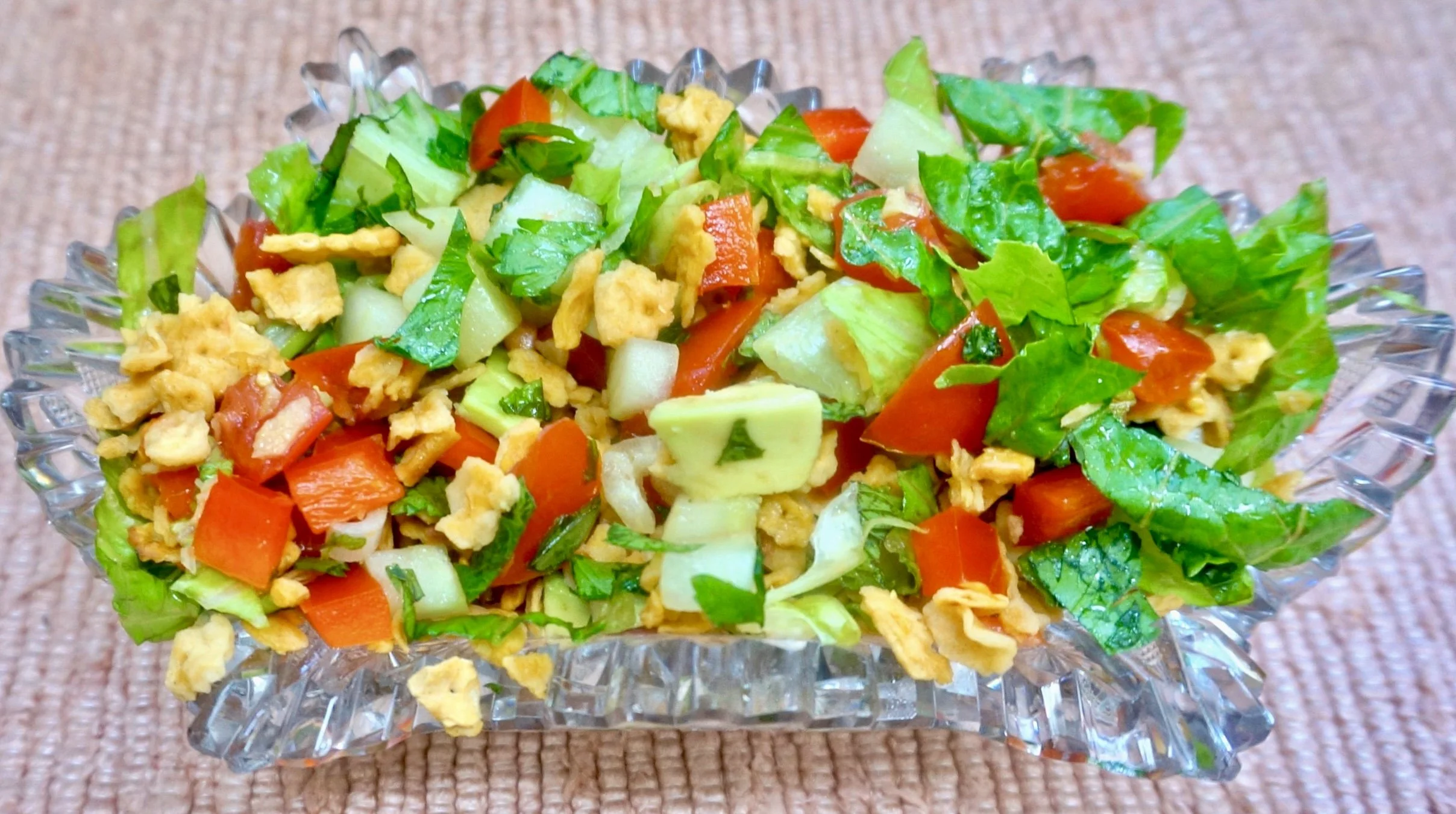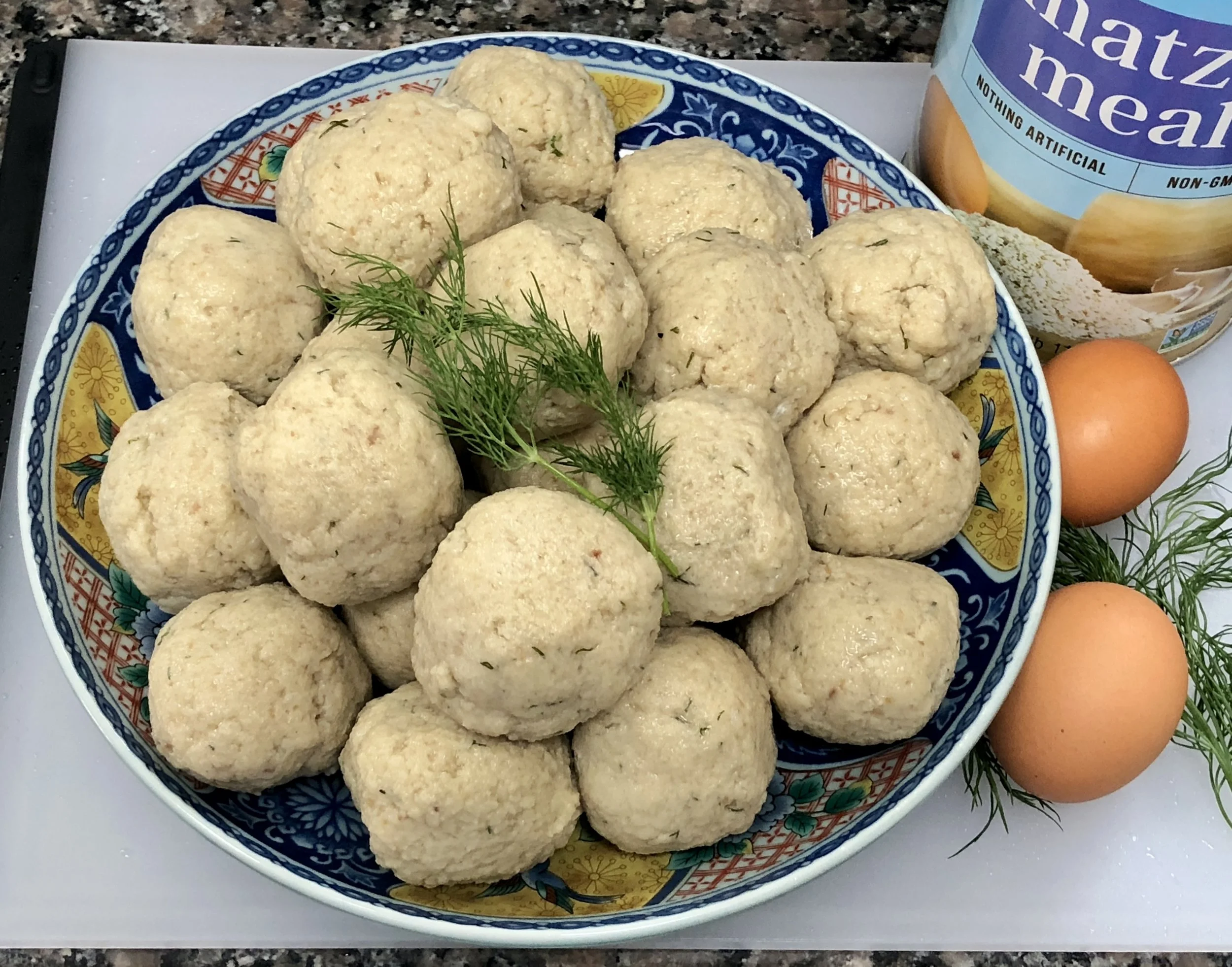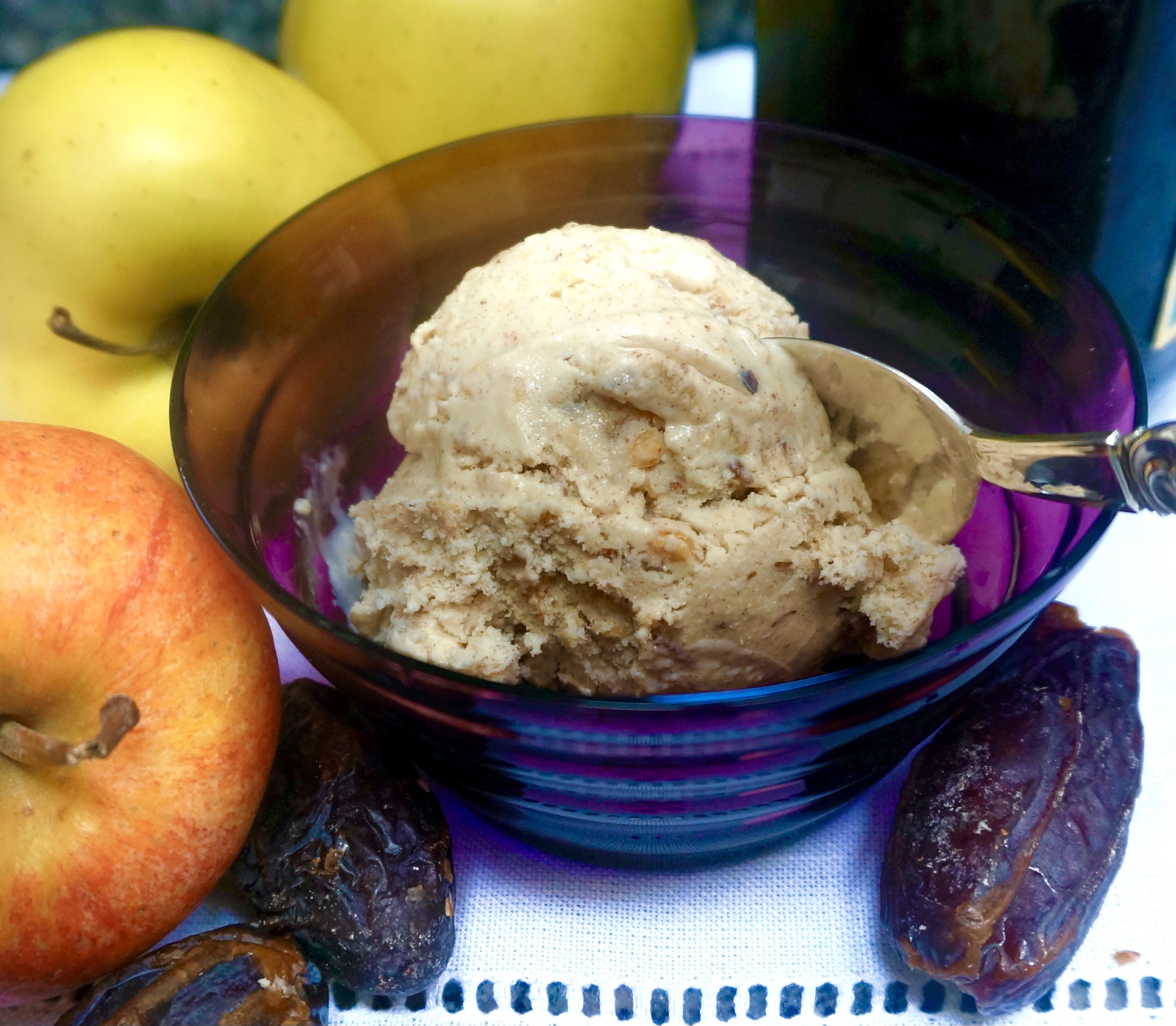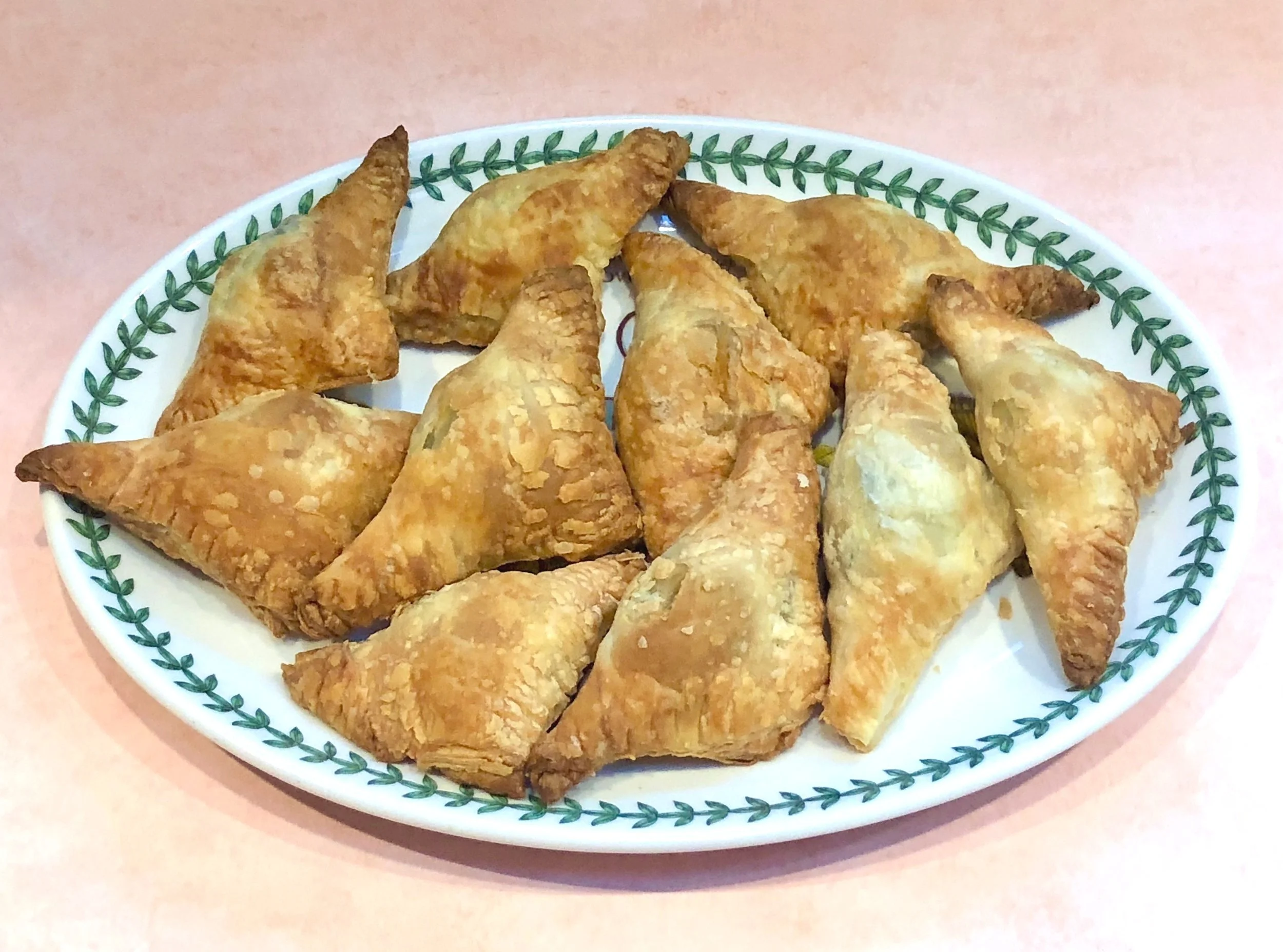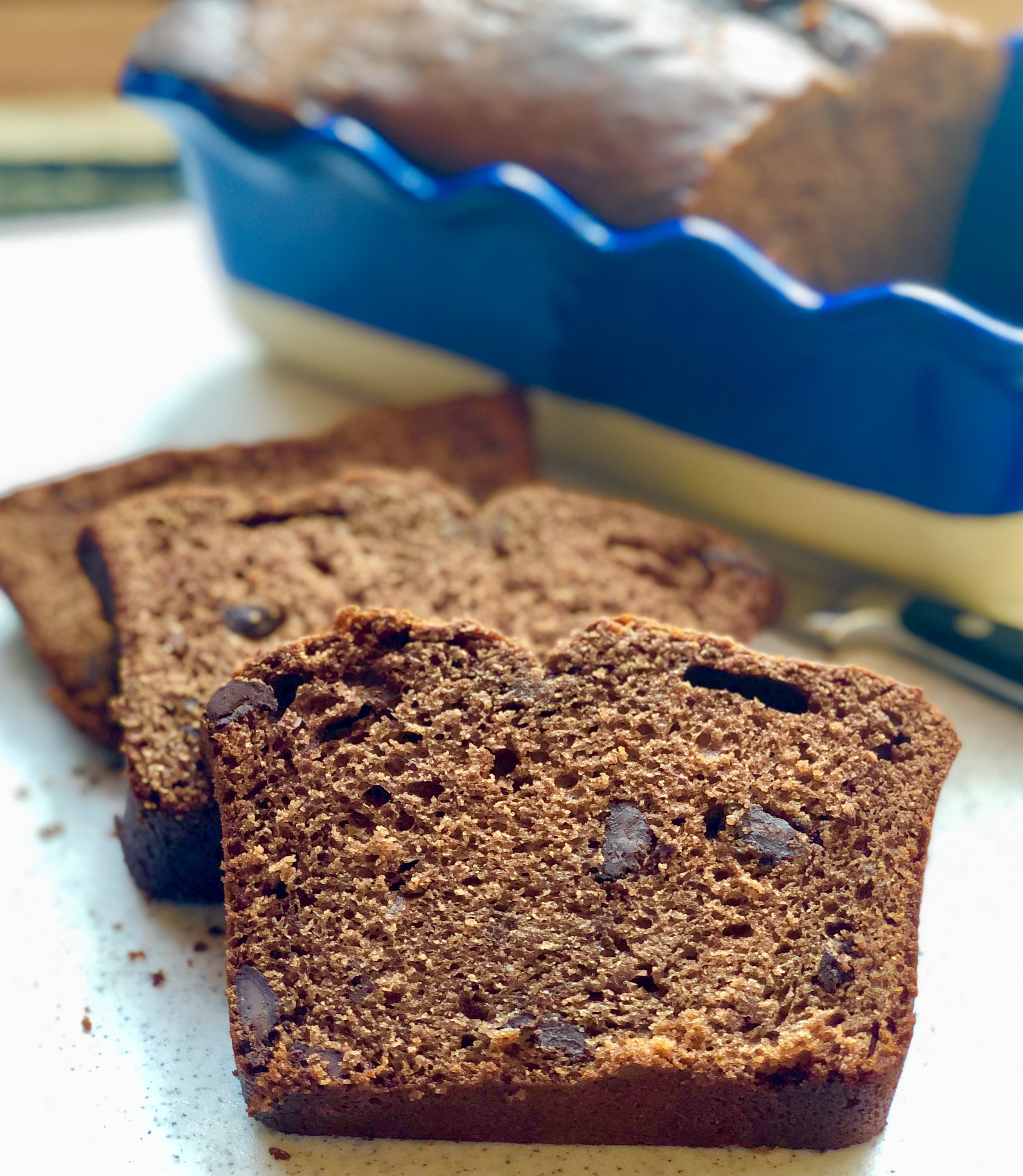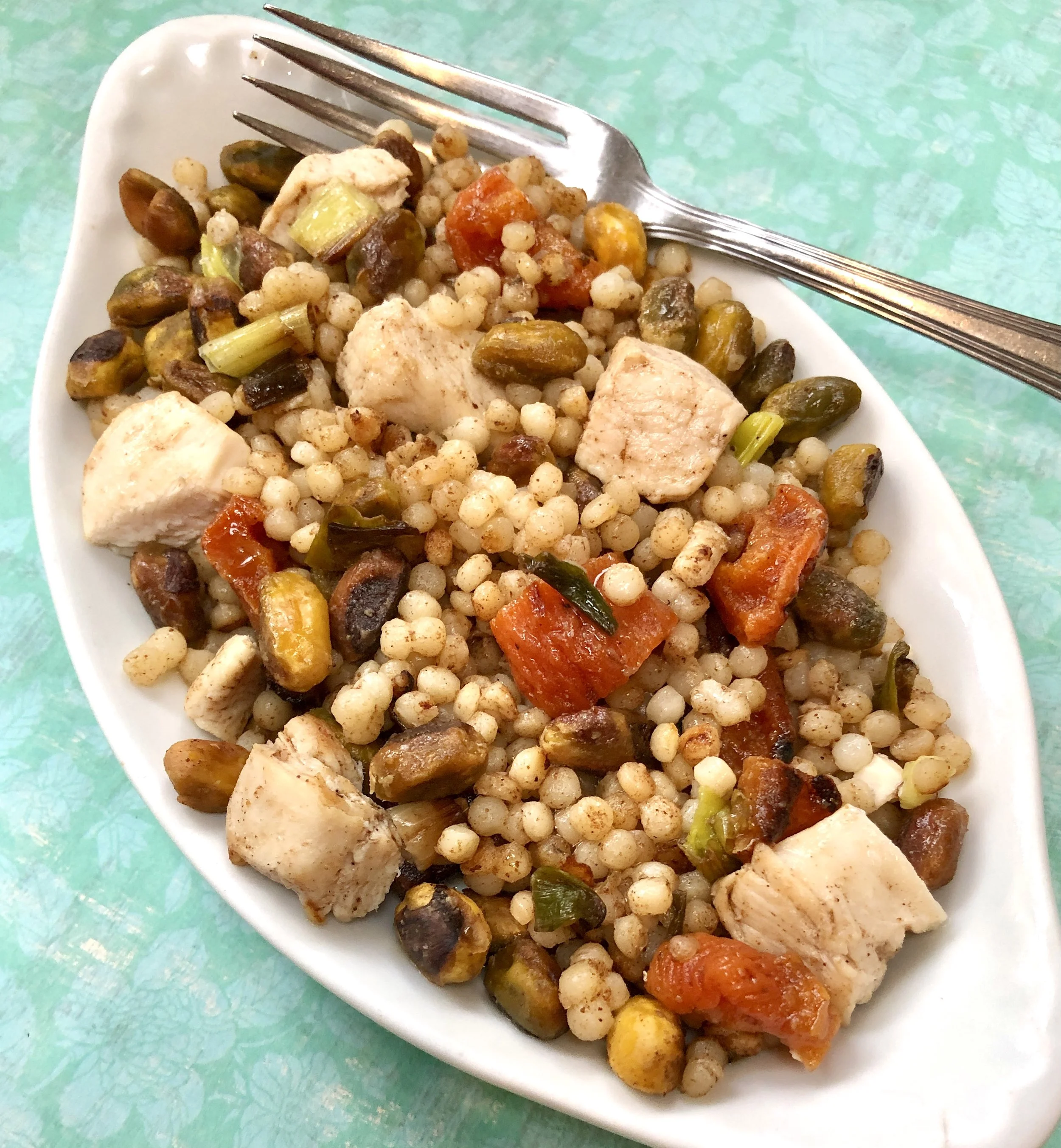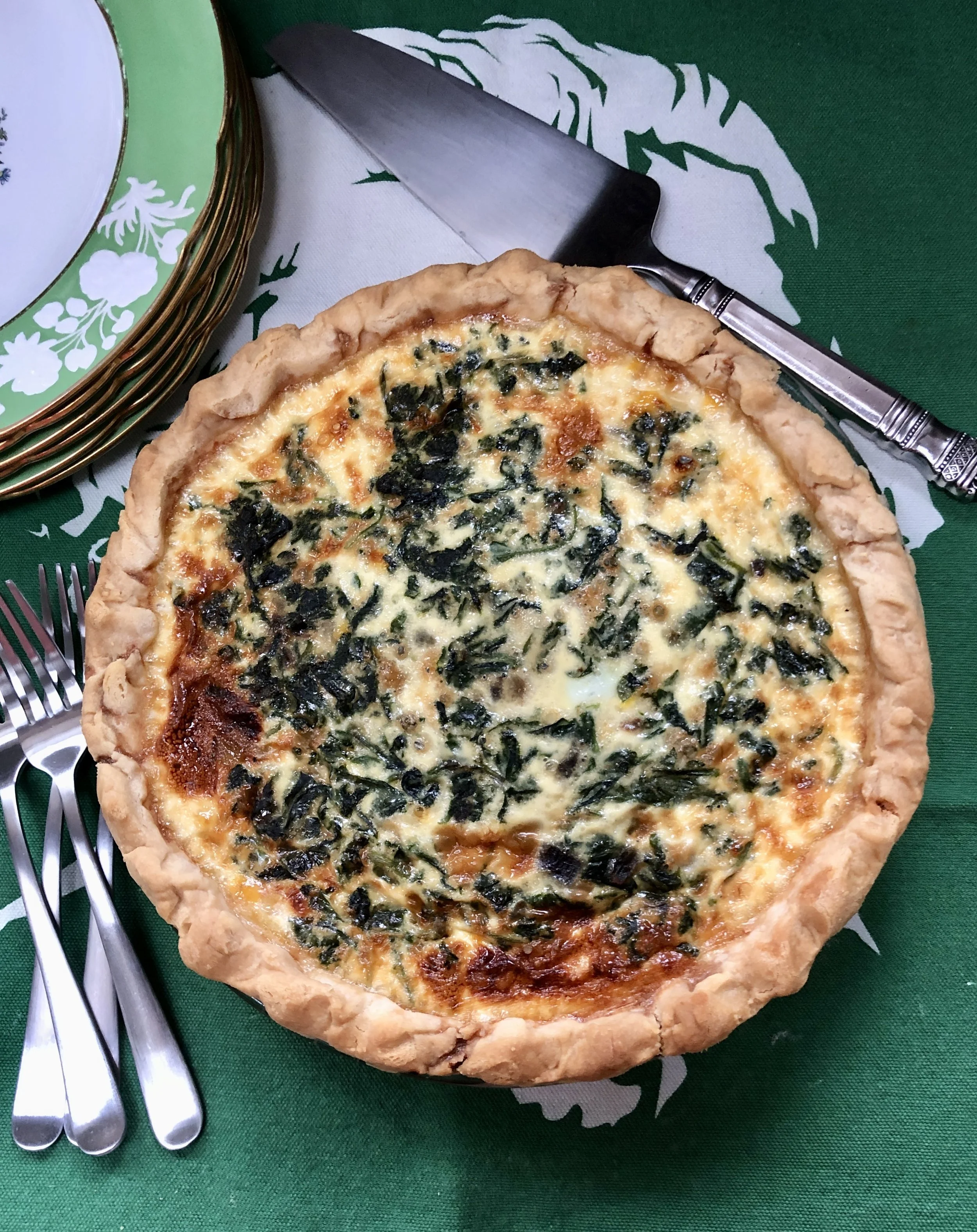Many years ago I learned to make spinach pie, loaded with crumbled feta cheese and seasoned with fresh dill. My family absolutely loved it, so it was — still is — a regular item on my menu. It’s almost always part of my break-the-fast feast.
Most of the time I make spinach pie using buttered layers of phyllo pastry, which makes for a crispy, delicate crust for the savory spinach filling below.
But we like the dish so much that on Passover, I top the pie with buttered matzo.
At one time I used the filling for spanakopitas, making spinach-filled layers of phyllo dough into small triangles. These were perfect as hors d’oeuvre and I would make dozens at a time and stock them in the freezer.
That was a LOT of work!
This year, thanks to inspiration from my Facebook friend Dana Shrager (@Danastable), who posted her recipe for spinach and cheese bourekas as a treat for Purim, I realized that I could make those wonderful hors d’oeuvres again using puff pastry, as she suggested!
SO MUCH EASIER!
I made a whole bunch of these, using my recipe for spinach pie as filling but using puff pastry. All I can say is that I will never go back to phyllo dough for these hors d’oeuvres. My tasters gobbled these down and I served them again to everyone’s absolute delight.
Thanks Dana, for your suggestion to use puff pastry and also that these, triangular shape that they are, would be perfect for Purim. Yes. They are indeed!
Here’s the recipe for spinach and cheese filling and instructions on how to make the triangle bourekas.
Spinach and Cheese Bourekas
1 10-ounce package frozen chopped spinach, thawed
2 tablespoons olive oil
1 medium onion, chopped
1 large egg
4 ounces feta cheese, crumbled
3 tablespoons grated Parmesan cheese
1 tablespoon finely chopped fresh dill
freshly ground black pepper to taste
2 sheets puff pastry, defrosted
Preheat the oven to 375 degrees. Squeeze as much water out of the spinach as possible and set aside. Heat the olive oil in a saute pan over medium heat. Add the onion and cook for 2-3 minutes. Stir in the spinach and mix well. Remove the pan from the heat. Add the egg, feta cheese, Parmesan cheese, dill and pepper. Mix well and set aside. Using one sheet at a time, roll the puff pastry on a lightly floured board slightly thinner (I did 12”x9”). Cut each sheet on the long side into 4 equal strips (3”). Cut the strips into thirds (making 12 pieces). Place equal amounts of the filling in the center of each piece of dough. Fold the dough to enclose the filling and make a triangle. Press the edges to seal them. If necessary, wet the edges of the pieces before folding, OR, press the edges down with the tines of a fork. Refrigerate for at least 30 minutes before baking. Bake for about 15-18 minutes or until browned and crispy.
Makes 24
